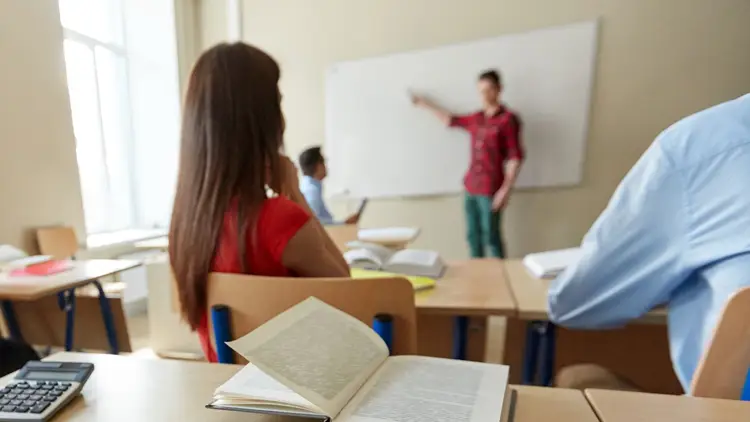In our recent special education study, we found that Washington state’s charter schools are serving students with disabilities at a higher rate than the national charter school average. When our data revealed the schools were also serving students with a wide range of disabilities in a mostly inclusive environment, I reflected on my own experience.
In my last year as a special educator in a charter school, a new student, Freddie, became my first student with an intellectual disability, and I wondered how we were going to serve him with our college prep curriculum. With some trial, error, and adaptation, Freddie took all his classes, other than English and math, with his peers. He became accepted by students and staff as another freshman student—pushed and supported in his work even when it wasn’t the same as everyone else’s. At the end of the school year, Freddie created a slide deck on a chapter book he worked through in our learning center and presented it to our class. To this day, I keep the video of that presentation on my phone to remind me of what’s possible when you innovate and push what school can look like for any student.
I can recount other stories of students while at my charter school: Jessica, who struggled with behavioral issues related to her learning disability, pushed herself to spend a fifth year in high school to meet the high expectations we had of her, despite her special education status. Katie, a math wiz with dyslexia, persisted in her work and, aided by strong relationships, went to college. These are the individual student stories that made me want to better understand how charter schools can serve students with disabilities.
As part of CRPE’s ongoing research on what is and isn’t working in charter schools across the country, I recently analyzed special education enrollment patterns in Washington state’s charter schools. Washington’s charter sector is unique: only 10 charter schools currently operate (two new schools will open in fall 2018), and challenges to the state’s 2012 charter law continue. The enrollment data revealed something else unique: more than 16 percent of Washington charter school students are in special education, a rate that far exceeds the national charter school average of 10.6 percent, and is higher than the state average of 12.4 percent.
The fact that Washington families with students in special education are choosing charter schools at such a high rate clearly shows the need for all schools to serve students with disabilities better than they have been. The evidence also counters the rhetoric that charter schools don’t serve students with disabilities.
In addition to eight out of ten Washington charter schools enrolling special education students at a rate above the state average, these schools are also serving a wide range of disabilities, including students with high needs, and serving a majority in a mostly inclusive environment. Looking at the monthly special education enrollment numbers for each charter school, we don’t see clear evidence of pushout or counseling out; several schools show enrollment increases in special education midyear as more students transfer in than out. It is still unclear if students in special education in Washington’s charter schools are receiving a higher-quality education than they would if they remained in their district-run schools, but the fact that families keep enrolling their students with disabilities in charter schools means they are probably doing something right. Whether it’s through the Washington State Charter Schools Association’s (WA Charters) new charter school incubation process or the True Measure Collaborative (a coordinated regional effort between the Puget Sound Educational Service District, WA Charters, and the Seneca Family of Agencies to support special education in charter schools), the state is enabling students in special education to finally have a choice in where they make their educational home.
As a researcher and a former special educator, I want to figure out how to ensure that students who have long been relegated to the portable in the school parking lot and denied a high-quality education can continue to have a choice. In Washington state, these early charter schools have the potential to innovate to better serve students with disabilities and give them the same chance that Freddie, Jessica, and Katie had—an education that pushes them to express their unique voices in a room full of their peers, meet further challenges in higher education, and ultimately succeed in fulfilling careers and lives. The next step is to determine how we can leverage policies to help charter schools do this challenging and often messy work.






